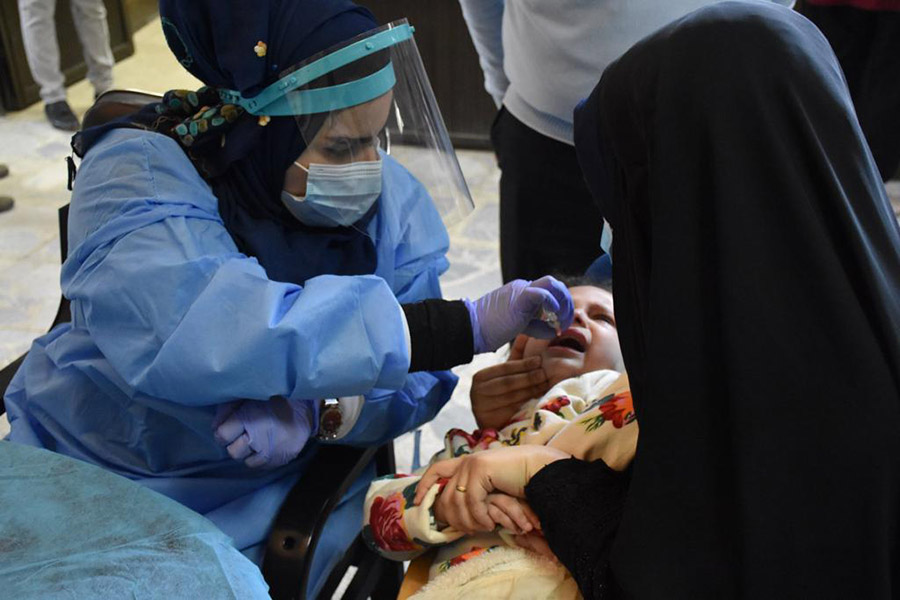 Following months of pause due to COVID-19 pandemic, polio immunization campaigns were resumed in December 2020 in Iraq, reaching 1.7 million children with polio vaccines
Following months of pause due to COVID-19 pandemic, polio immunization campaigns were resumed in December 2020 in Iraq, reaching 1.7 million children with polio vaccines
Iraq has been free of wild poliovirus (WPV) since 2014, when wild poliovirus type 1 (WPV1) was confirmed as the cause of paralysis in a six-month-old boy and a 34-month-old girl in Baghdad. Those two cases of paralytic polio came after a 14-year absence, imported from a WPV1 outbreak first detected in Syria.
At the 60th meeting of the World Health Organization Regional Committee in Oman – a meeting that coincided with the announcement of the outbreak in Syria – a regional health emergency was announced. Through the multi-country coordinated effort of numerous partners, a response strategy was rapidly launched to be implemented across the Syrian Arab Republic, Iraq, Jordan, Lebanon, Turkey, Egypt and the West Bank and Gaza Strip.
The outbreak underscored the urgency of reaching every child: both children paralysed in Iraq had been missed by routine immunization and supplementary immunization activities (SIAs).
Responding to an outbreak and raising immunity levels
As part of the region-wide response to the outbreak, Iraqi health authorities, in partnership with WHO and UNICEF, began a series of nationwide polio vaccination campaigns. The response strategy focused on interrupting WPV transmission by vaccinating 22 million children aged under 5 years across the Region.
Through the concerted effort of multiple donors, governments, United Nations agencies, nongovernmental organizations, civil society and volunteers, the spread of the virus was contained and transmission was interrupted within a period of less than 10 months. As a result, thousands of children were saved from permanent disability due to poliomyelitis.
Since the 2014 outbreak, Iraq has been free of both WPV and vaccine-derived polioviruses (VDPV). This is in large part down to sustained, comprehensive efforts to reach every child through routine immunization, which is offered through the national Basic Health Services Package, and through SIAs.
These efforts have been and continue to be critical risk-mitigation strategies for a country that is otherwise at high risk of poliovirus. Ongoing regional instability, a shared border with Syria, which experienced a devastating circulating vaccine-derived poliovirus type 2 outbreak in 2017, and an increasingly fragile public health system following years of conflict and economic crisis are all factors that make Iraq vulnerable to importation of WPV or either the emergence or importation of VDPVs.
Polio surveillance in Iraq
Iraq has a robust acute flaccid paralysis (AFP) network that includes 150 active surveillance sites in 20 governorates, and a vast network of reporting sites. Regular training and sensitization sessions are carried out for national-level and governorate-level polio focal points, who then cascade teaching down to district-level and field-level staff. Iraq maintains all key polio indicators at an international standard.
As of early 2022, efforts are under way to introduce environmental surveillance in Iraq to complement the country’s AFP surveillance network.


